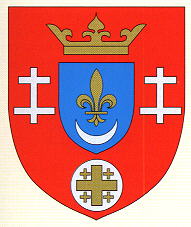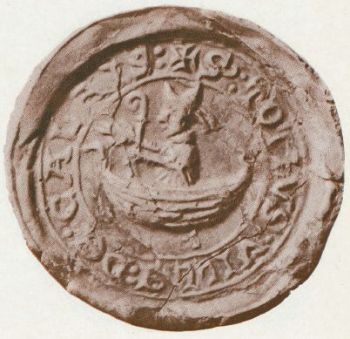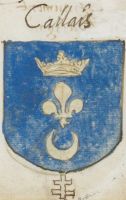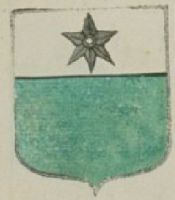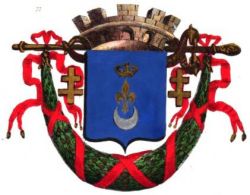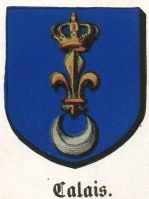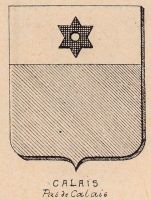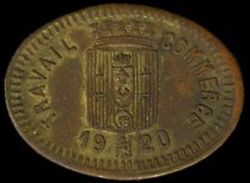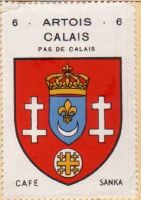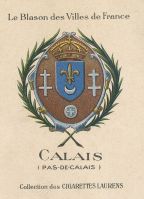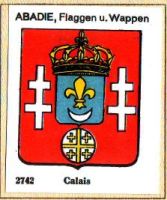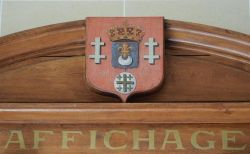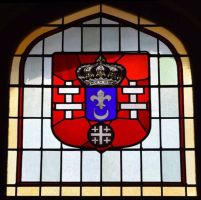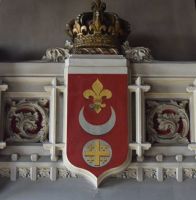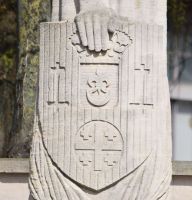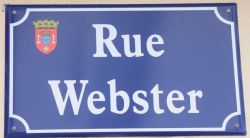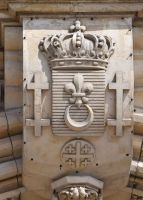Calais
|
Country : France Département : Pas-de-Calais |
| French | De gueules à l'écusson cousu d'azur chargé d'une fleur de lis d'or soutenue d'un croissant d'argent, l'écusson timbré d'une couronne royale d'or, accosté de deux croisettes patriarcales [croix de Lorraine] d'argent et soutenu d'un besant d'argent chargé de la croix de Jérusalem d'or. |
| English | blazon wanted |
Origin/meaning
There are no arms known for Calais during the British period (1337-1558), only a seal showing a bishop in a ship.
| The oldest seal (1st half 13th century; Ewe, 1972) |
The first arms were granted by the French King Henry II in 1558 and confirmed by King Louis XVIII on April 19, 1817.
The fleur-de-lys and the crown indicate the conquest of Calais in 1558 by the French. The fleur-de-lys was the French Royal symbol. The city was conquered by François of Lorraine, Duke of Guise, the cousin of Henry II. This is symbolised by the two crosses of Lorraine.
Calais was also a famous port where many English and French knights departed for the crusades. This is symbolised by the crescent and the Jerusalem Cross in base.
The current arms may be decorated by the chains of the Croix de Guerre (twice, for 1914-1918 and 1940-1945) and the Légion d’Honneur (granted in 1947).
I have not seen the exact texts on the grants from either 1558 or 1817, but during the years the arms have been shown in many different ways, as shown below.
The arms in a 16th century manuscript
The arms in the Café Sanka album +/- 1932
The arms on a tobacco card by Laurens
The arms in the Abadie albums
Literature: Bréemersch et al., 1996
